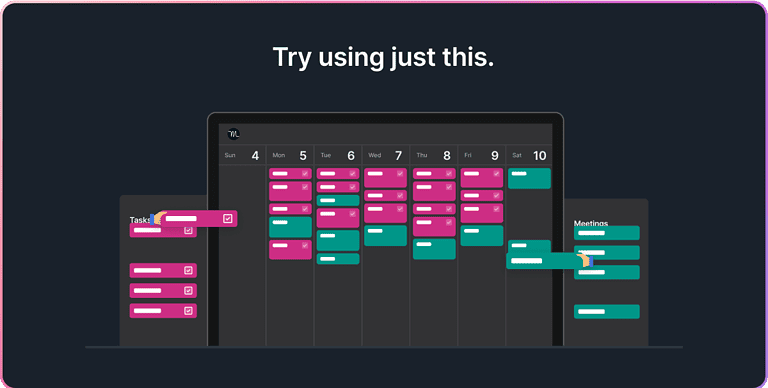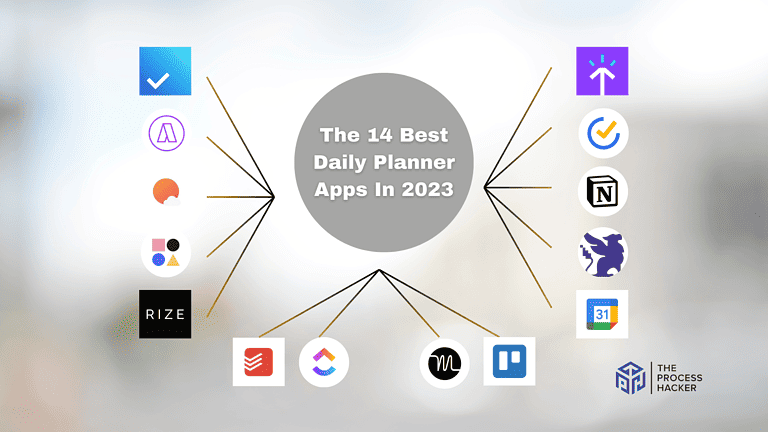How to Master Monthly Planning Even if You’re Overwhelmed
Feeling swamped with tasks and responsibilities as each new month rolls in? You’re not alone. The challenge of juggling multiple important projects and deadlines can often lead to a sense of being constantly behind.
Imagine having a system that not only manages but streamlines your monthly planning. A solution that transforms chaos into a structured pathway, enabling you to tackle each day with confidence. Intrigued?
This blog post explores a method that provides a clear, actionable approach to dissecting your monthly goals into manageable tasks. By integrating strategic planning tools and techniques, you can visualize your entire month at a glance, prioritize effectively, and set achievable deadlines. It’s about making each hour count, ensuring that you stay on track without the last-minute rush.
Start today by setting aside just 15 minutes to outline your major goals for the month. Break these down into weekly and daily objectives. Adopt tools designed to enhance productivity and keep you motivated. Are you ready to take control of your life?
Let’s dive in and make this month your most organized yet!
What is Monthly Planning?
Monthly planning isn’t just about filling out dates in a calendar; it’s a strategic tool that empowers you to manage your time effectively, ensuring that every hour of your day moves you closer to your monthly and then quarterly goals. The happy planning process involves setting clear, actionable objectives for the upcoming busy month and then breaking these down into weekly and daily tasks.
When you plan monthly, you get a bird’s-eye view of your commitments and responsibilities. This overview allows you to allocate time wisely, balance your workload, and preemptively tackle potential challenges.
By doing so, you transform what might seem like an overwhelming pile of tasks into manageable steps, ensuring that you meet and exceed your monthly expectations.
Why You Need to Master Monthly Planning
Monthly planning is crucial for anyone looking to boost productivity and reduce stress. Here’s why it’s so important:
1) Provides a broader perspective than weekly planning
While weekly planning is essential for tackling day-to-day tasks, monthly planning offers a broader lens. It’s like zooming out on a map; you better understand the terrain ahead.
You’ll see the bigger picture, anticipate upcoming events like birthdays, deadlines, or travel plans, and make proactive decisions rather than scrambling at the last minute.
2) Helps align short-term actions with long-term goals
It’s easy to get caught up in the daily grind and lose sight of your long-term goals. Monthly planning acts as a compass, always pointing you back to your true north.
It keeps your big picture in mind, ensuring your daily actions contribute to your overall vision, whether it’s career advancement, personal growth, or financial stability.
3) Improves time management and reduces overwhelm
When you have a clear plan, you spend less time reacting to urgent tasks and more time proactively working towards what matters.
It’s like having a trusted assistant who helps you prioritize and delegate so you can focus on the most impactful activities. This reduces overwhelm and increases your sense of control over your schedule.
4) Allows for better resource allocation and prioritization
Monthly planning lets you assess your resources—time, energy, money—and make informed decisions about where to allocate them. It’s like budgeting your finances but for your life.
This ensures your priorities get the attention they deserve, whether it’s spending quality time with loved ones, pursuing a passion project, or simply taking care of yourself.
5) Increases accountability and motivation
Having a plan and reviewing it regularly keeps you accountable to yourself. It’s like having a personal coach cheering you on. Seeing your progress, even small wins, boosts motivation and keeps you moving forward, even when faced with challenges or setbacks.
By mastering monthly planning, you can transform chaotic weeks into purposeful months.
How to Create an Effective Monthly Plan
Follow these steps to develop a monthly planning routine that works for you:
- Reflect and Review: Assess the Previous Month
- Set Monthly Goals: Define Your Priorities
- Create a Monthly Calendar: Schedule Key Tasks and Events
- Break It Down: Integrate with Weekly Planning
#1: Reflect and Review to Assess the Previous Month
- Evaluate completed tasks and unfinished business: Take a moment to acknowledge what you achieved last month and identify any loose ends. Celebrate your successes and learn from any setbacks.
- Identify successes and challenges: What went well? Where did you face obstacles? Recognizing patterns helps you make better decisions this month.
- Carry over any incomplete tasks or missed goals: Did any tasks fall through the cracks? If they’re still relevant, incorporate them into this month’s plan.
#2: Set Monthly Goals and Define Your Priorities
- List your top 3-5 most important goals for the month: Don’t try to do it all at once. Focus on a few key objectives to avoid spreading yourself too thin.
- Align these goals with your quarterly or annual objectives: Make sure your monthly goals contribute to the bigger picture.
- Ensure your goals are SMART: Specific, Measurable, Achievable, Relevant, and Time-bound. This gives you clarity and direction.
#3: Create a Monthly Calendar and Schedule Key Tasks and Events
- Use a monthly planner or digital calendar to visualize the entire month: Seeing the whole month at a glance helps you anticipate and plan accordingly.
- Mark important dates, deadlines, and appointments: Include birthdays, holidays, meetings, travel plans, etc.
- Allocate time to work on your monthly goals: Block off dedicated time slots to ensure you make progress on your priorities.
#4: Break It Down: Integrate with Weekly Planning
- Review your monthly calendar at the beginning of each week: This helps you set weekly priorities and ensure alignment with your monthly goals.
- Schedule specific tasks and action steps related to your monthly goals: Break down larger goals into smaller, more manageable tasks.
- Leave room for flexibility: Things change, so be prepared to adjust your weekly plan as needed.
- Regularly track your progress: Monitor how you’re doing against your monthly goals and make necessary adjustments as needed.
Key Considerations For Successful Monthly Planning
Consistency is crucial for effective monthly planning. Choose a specific day each month for planning, such as the last day of the previous month or the first day of the new month. This helps establish a routine and ensures that you’re always looking ahead.
Remember to balance structure with flexibility. While having a plan is important, life happens. Allow room for unexpected opportunities or challenges. Be willing to adjust your plan as needed without losing sight of your overall goals.
Taking it to the Next Level: Incorporating Habit Tracking
Once you’ve mastered the basics of monthly planning, consider incorporating habit tracking. This adds another layer of intentionality and helps you build positive routines that support your goals.
- Track habits related to your monthly goals: If one of your goals is to improve your fitness, track daily exercise habits. Or, if you’re working on new projects, track your daily writing or practice time.
- Use a habit tracker: There are many apps and tools available to track your habits, but a simple notebook or spreadsheet works just as well.
- Review your habit tracker regularly: Celebrate your successes and identify areas for improvement. This helps you stay motivated and on track.
Remember, building new habits takes time and effort. Be patient, and don’t be afraid to adjust your approach if something isn’t working.
Alternatives to Traditional Monthly Planning
While the monthly planning approach we’ve outlined is highly effective, there are other ways to stay focused and organized. Here are a few alternatives worth considering, especially if you find yourself needing more or less structure:
- Quarterly planning with monthly check-ins: If you crave a longer-term perspective but still want to stay on track in the short term, consider planning on a quarterly basis with regular monthly check-ins. This allows you to set overarching goals for the quarter while using monthly check-ins to adjust your course as needed.
- Rolling 30-day plans that shift daily: This approach offers maximum flexibility. Each day, you plan for the next 30 days, ensuring you’re always looking ahead without being locked into a rigid monthly structure. This is ideal for those whose schedules change frequently or who thrive in a more dynamic environment.
- Theme-based planning focusing on one area of life each month: This approach allows you to dedicate focused attention to different aspects of your life throughout the year. For example, one month, you might focus on your health and fitness goals, while the next month, you prioritize your career development. This can be a great way to maintain balance and ensure all areas of your life receive the attention they deserve.
Ultimately, the best planning approach is the one that works best for you. Experiment with different methods and find what helps you stay motivated, organized, and in control of your time and priorities.
Final Thoughts on Monthly Planning
Mastering monthly planning may seem daunting at first, but it is truly a game-changer for your productivity and personal growth.
With the tips and techniques shared in this post, you have all the tools to transform from feeling overwhelmed to being in control of your time and goals. Don’t be afraid to start simple and make adjustments as needed.
Just like a fine wine, your monthly planning process will only get better with time and consistency. So raise a glass (of water or wine, we don’t judge) to your future self, who will thank you for taking charge of your life.
You’ll soon discover that the benefits of effective monthly planning go far beyond just crossing off tasks on a to-do list. It’s about achieving balance and fulfillment in all aspects of your life.
So cheers to becoming the master of your own destiny! Keep planning, keep growing, and remember – you got this!
Now go forth and conquer those monthly goals like the champion planner you are!







